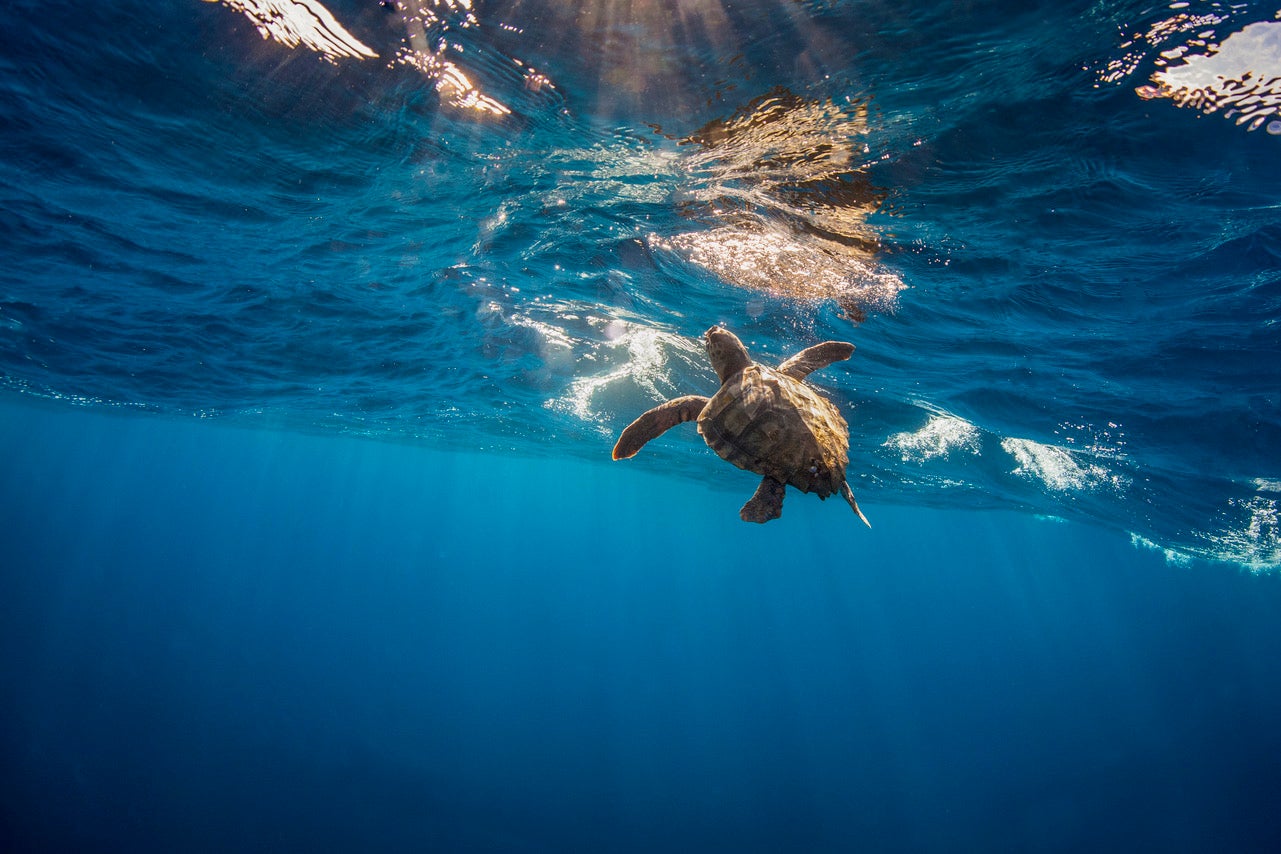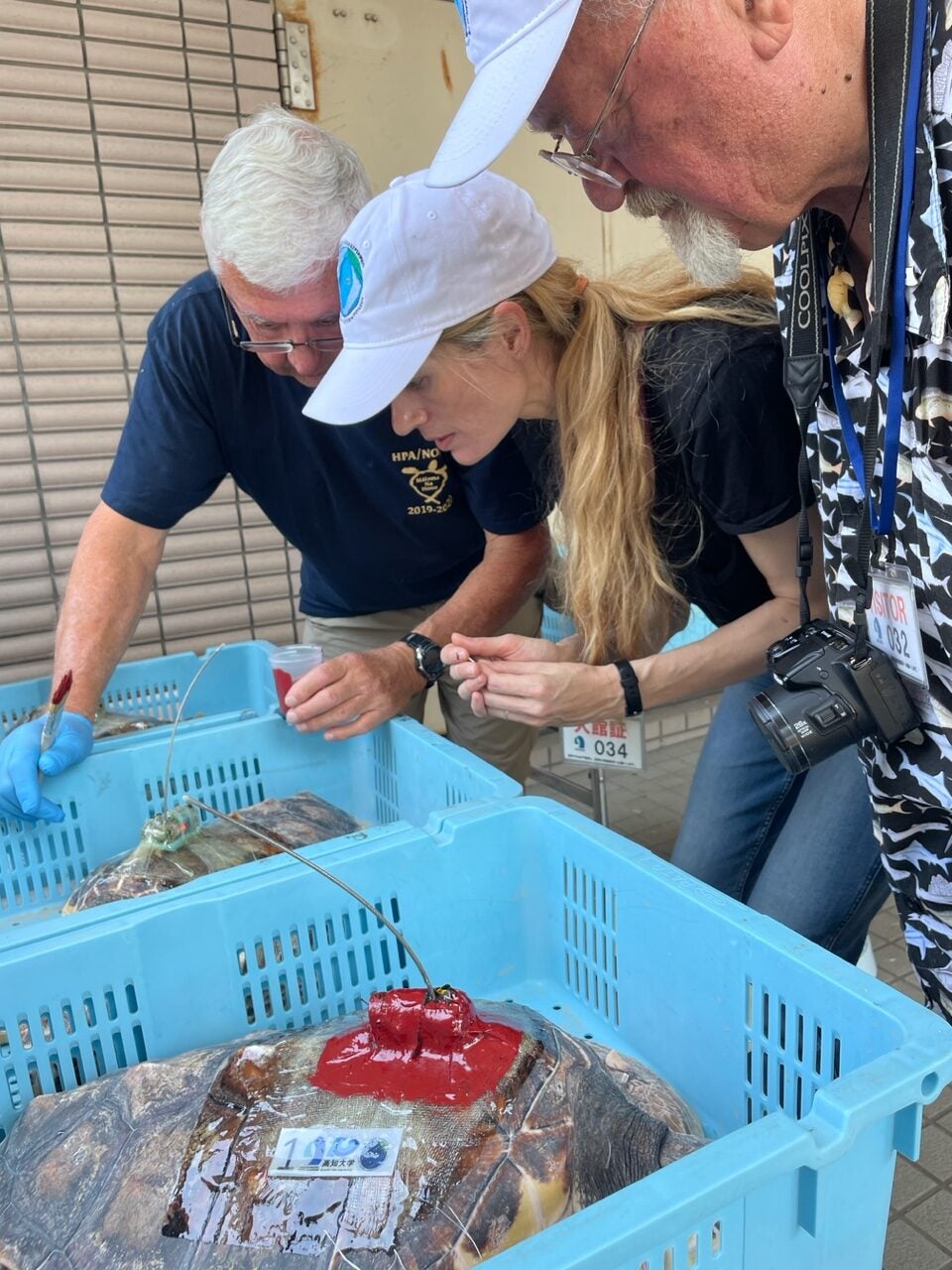Every now and then, small groups of endangered North Pacific loggerhead turtle hatchlings swim from Japan to the coastal waters of Baja Mexico and California, a journey of nearly 8,000 miles that has mystified scientists for decades.

A new experiment seeks to help solve the question of how tropical, temperature-sensitive turtles manage to cross a cold deep-ocean zone. (Image credit: Ralph Pace)
The crux of the mystery is not how loggerheads find their way: Scientists believe they navigate the globe using Earth’s magnetic fields, as do salmon, elephant seals, some species of shark, and other turtle species. Rather, experts have puzzled over how these young, tropical, temperature-sensitive turtles manage to cross a deep-ocean zone that’s cold enough to be nearly impassable for most creatures.
“They go past the point of no return and head toward Baja, when most of the other turtles turn back,” said Stanford marine ecologist Larry Crowder. Now, an international team of scientists has released from a ship on the high seas 25 satellite-tagged turtles in an experiment that could confirm or modify the leading explanation for how they do it. Three more cohorts are planned for release over the next four years, for a total of 100 tagged turtles.
The hypothesis the scientists are testing, first published in 2021 by Stanford researcher Dana Briscoe with Crowder and colleagues, is that El Niño and other intermittent ocean warming phenomena occasionally create a corridor of warm water that cuts through the cold California Current, allowing migrating turtles who happen to be nearby to cross the barrier and continue on to foraging grounds in Baja.
“If they’re at the east end of this North Pacific transition zone and it happens to be an extremely warm year, they can go to Baja. But if they hit cold water, they turn back because that just shuts them down physiologically,” said Crowder.
“We believe this migratory pathway is only open during anomalously warm water events, providing a missing piece to the puzzle as to how turtles access important North American habitat,” said Briscoe, who developed the “thermal corridor hypothesis” with Crowder based on analysis of tracking data from hundreds of turtles and the oceanographic conditions that greeted them at that normally cold tongue of water in the open ocean.
El Niño opens a transient corridor

Larry Crowder, Dana Briscoe, and Marc Rice carefully attach a tag to a turtle in the first cohort set for release in July 2023. (Image credit: Laura Jim, Hawai‘i Preparatory Academy)
El Niño is the “warm phase” of a cyclical weather pattern marked by unusually warm ocean temperatures right along loggerhead sea turtles’ path from Japan to Baja. El Niño conditions typically arise every two to seven years, on average, bringing dramatic shifts in temperature, rainfall, and winds around the globe.
During the most recent El Niño phase, in 2016, tens of thousands of loggerhead sea turtles showed up off the coast of San Diego, California. “Everyone said, well, it’s warm, they just came up from Mexico,” recalled Crowder, the Edward Ricketts Provostial Professor and professor of oceans in the Stanford Doerr School of Sustainability. But analysis of skin tissue showed that they had been living off a diet found only in the open ocean, strongly suggesting the turtles had originated near Japan and adding weight to the thermal corridor hypothesis.
“I think most scientists would have just stopped there. But we conceived of this idea: Let’s release cohorts of loggerheads over four years, hoping to hit a hot year and a cold year. In the cold year, they should not go to North America, and in the warm year, they might,” Crowder said. Collaborators from Kochi University collected turtles from nesting beaches in Japan beginning in the summer of 2021 and brought them to the Port of Nagoya Public Aquarium for raising.
Migrating across a changing ocean
Because El Niño conditions usually last for less than a year, the onset of El Niño conditions in early June 2023 opened a narrow window to release a cohort of loggerheads at a time when the California Current is expected to be warm enough to cross. Missing this year’s El Niño could mean the next opportunity wouldn’t arise again for another seven years.
“With climate change, one might expect this corridor to become more open, more often.”
—Larry Crowder
Edward Ricketts Provostial Professor, Professor of Oceans
So, during the week of June 19, the team attached tags to the 25 young turtles. The next week, in the port of Nagoya, they loaded the turtles onto an eastbound cargo carrier. After roughly two weeks at sea, researchers from the Port of Nagoya Public Aquarium and Kochi University gently lowered the turtles into the water near the east end of the North Pacific transition zone.
Over the next few years, the experiment could help scientists better predict where and how loggerheads may be harmed by industrial fisheries in international waters or off the coast of North America. The results could also help researchers anticipate shifts in the species’ migration patterns under global warming. “With climate change, one might expect this corridor to become more open, more often,” Crowder said.
“We’re hoping to challenge more people in the science community, in the management community, to think about using satellite tagging as a device not just to describe what animals are doing and make hypotheses, but to test those hypotheses experimentally,” Crowder said. “So, there’s a philosophical jump into a new phase of experimental oceanography that comes out of this project.”
Crowder is also a senior fellow at the Stanford Woods Institute for the Environment and a professor, by courtesy, of biology. Briscoe is a senior data scientist at the Stanford Woods Institute for the Environment. Additional project collaborators include Bianca Santos, a PhD student in Stanford’s Emmett Interdisciplinary Program in Environment and Resources (E-IPER), and researchers affiliated with the University of Hawai‘i at Mānoa, NOAA-Southwest Fisheries Science Center, Universidad Nacional Autónoma de México, Golden Honu Services of Oceania, and Hawai‘i Preparatory Academy’s Sea Turtle Research Program. Wildlife Computers supplied the satellite tags.
This project is supported by the National Geographic Society and the Gordon and Betty Moore Foundation.
View talk by Crowder on the project. View videos of an overview of the loggerhead STRETCH project, researchers attaching the first seven satellite tags, and attaching the second batch of tags.
Media Contacts
Larry Crowder, Stanford Doerr School of Sustainability: larry.crowder@stanford.edu
Dana Briscoe, Stanford Woods Institute for the Environment: dana.briscoe@stanford.edu
Josie Garthwaite, Stanford Doerr School of Sustainability: (650) 497-0947, josieg@stanford.edu